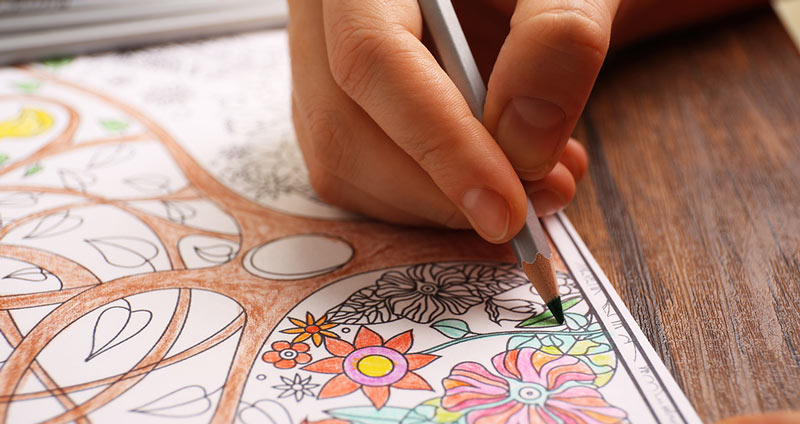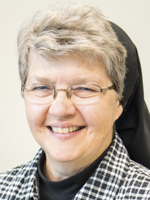
Suddenly coloring books for grown-ups are all the rage. At one time, a few craft shops here and there stocked little books of geometric designs in black and white for adults to tint and possibly frame. Now, though, coloring books for those old enough to vote (and their grandparents) are turning up in bookstores, pharmacies, and grocery chains. They feature seascapes, cityscapes, birds, and rural scenery.
Americans are deeply rooted in school art projects, and homemade ones, too. We’ve made and seen the cards and posters that are designed in school. Favored childhood occupations at home, once school is out especially, involve finger paint, colored pencils, crayons, or markers. The glorious results are displayed on walls, bulletin boards, and refrigerators. But it may all seem a little silly when an adult who isn’t deemed an artist — that is, one who has taken classes and has his or her own easel — starts coloring.
On second thought, though, we find that it makes sense. When a person is under significant stress there is a hunger for diversion and beauty and release. Adults can be dumbstruck by family tragedy and an onslaught of financial pressures. Meanwhile, everyday life has to go on. I recall journaling at one such point that all I wanted to do was color. It was a notice to God that I was longing for a bit of childhood’s innocence and simplicity.
All of us have been there at some point. One man I know took up wood-carving amid years of caring for a wife who had become blind and wheel-chair bound. He got so good at it that he ended up carving one plaque with the papal tiara and Peter’s keys and another with our religious community’s coat of arms when our motherhouse chapel was named a minor basilica. They occupy a place of prominence there today. He didn’t take up the hobby to become a semi-professional religious artist, but he did throw himself into the work so thoroughly that he became exquisitely skilled. Many women have become proficient quilters and knitters of afghans. Some of them have bestowed their products on elder care facilities and hospices. Again, they did not begin with an eye to donating or marketing wares. They simply became lost in the handiwork and kept at it.
Arts and crafts are, then, a constructive form of escape and pain relief. They benefit the artist and craftworker spiritually and emotionally, and they may also produce results that please and benefit others.
Those who color and craft are practicing a virtue that has received insufficient press. St. Thomas Aquinas noted it in the Summa Theologica. Theologian Hugo Rahner, brother to the more famous Jesuit Karl, wrote a whole book about it. It’s the virtue of eutrapelia, the virtue of recreation. Saints and theologians know that we earthlings need respite and mini-sabbaticals. Coloring books may just do it for some. With backing from someone like Aquinas, we may even find these popular little books incline us to become a bit more contemplative as we relax.


